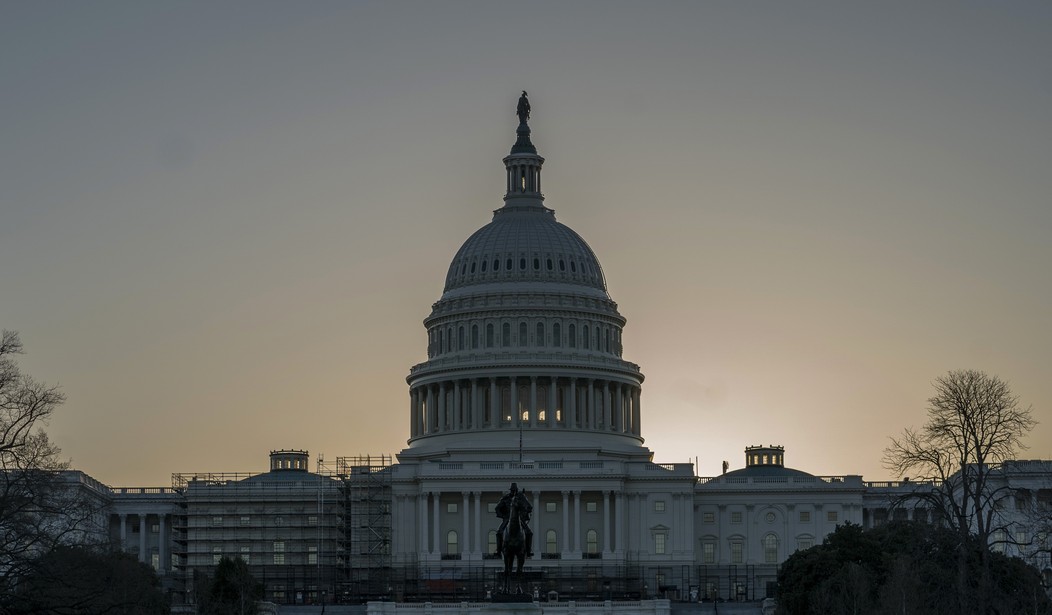Believe it or not, the last time the U.S. Congress passed a budget in full and on time was all the way back in 1997, well before smartphones became ubiquitous and the advent of social media transformed how humans interact with one another. Perhaps even more concerning, the U.S. Congress has failed to pass a balanced budget since 2000.
In 2000, our national debt stood at $5.6 trillion compared to our GDP, which clocked in at roughly $10 trillion. Today, those figures have almost reversed. Now, our national debt has ballooned to approximately $33 trillion, while our GDP has increased to $25 trillion.
Put another way, about two decades ago, our economy was humming along at a four percent growth rate, and our debt-to-GDP ratio was a healthy 54 percent. Today, our economic growth is barely eclipsing two percent annually, and our debt-to-GDP ratio is an abysmal 130 percent.
Obviously, this is unsustainable. But, more importantly, this is immoral because Congress continues to burden future generations with mountains of debt simply because they lack the courage and conviction to make difficult decisions when it comes to the federal budget.
In fiscal year 2022, total federal spending registered at a mind-boggling $6.3 trillion. For comparison, in fiscal year 2019, before the COVID-19 spendathon, the federal government only spent $4.4 trillion.
Because the federal government generally operates on baseline budgeting rather than zero-based budgeting, it is extremely difficult to make actual cuts once additional funding has been appropriated to agencies. This is a major part of the problem because the vast bureaucracies deeply embedded throughout the federal leviathan always push for more, never less, spending.
However, this aspect of the broken budget process pales in comparison to the heart of the problem: The Big Three programs that are on autopilot: Social Security, Medicare, and Medicaid.
In fiscal year 2022, spending for Social Security, Medicare, and Medicaid encompassed nearly half of the total federal budget. But, here’s the rub: As Baby Boomers continue to retire and depend on Social Security and Medicare benefits, those programs creep ever closer to insolvency.
As of now, the Congressional Budget Office (CBO) predicts that Social Security will become insolvent within the next decade. Even worse, CBO estimates that Medicare will become insolvent over the next five years. When these giant programs eventually run short of funding, the rubber will truly meet the road. As interest on the debt increases and debt payments consume more of the federal budget, other programs will be squeezed simply because there will not be enough money to pay for everything.
This could be a positive or negative. For the optimist, they may argue that this will finally force the federal government to do away with frivolous programs, redundant agencies, and wasteful initiatives. On the other hand, we also could see deep cuts to national defense and other important institutions.
Perhaps the worst-case scenario would be if a future Congress were to eliminate the debt ceiling, and go full bore into modern monetary theory (MMT), whereby debt and deficits don’t matter. Under an MMT model, which is being pushed by some in Congress, the federal government can simply print money to no end. Of course, this will lead to hyperinflation and more turmoil.
Fortunately, there are several other routes Congress could embark upon that could avoid a debt crisis and the ensuing devastation it would bring.
First and foremost, Congress must cut spending to slow the growth of debt over the long term. For years to come, the federal government is staring at trillion-dollar deficits. This must be reversed immediately by cutting the fat that has infused the federal budget, especially with regard to wasteful domestic spending. For a good guide, I recommend Congress read the 2023 Congressional Pig Book, which documents a long list of superfluous spending measures.
Second, Congress must come together and compromise about the future of the Big Three programs, which continue to eat more and more of the budget every year. In the mid-2000s, this almost occurred, as then-President Obama and then-Speaker of the House John Boehner (R-OH) came close to agreeing to a “Grand Bargain.” But, that fell apart, and there has not been a sincere effort to engage in an honest dialogue about how to save these programs since then.
Third, and perhaps most importantly, Congress must prioritize policies that will push, not stifle, economic growth. On this issue, there is a lot of low-hanging fruit. For instance, Congress should reform the overly complex tax code, reduce burdensome regulations, allow American energy to become dominant again, and incentivize Americans to work instead of living off of the dole.
The good news is that it is not too late to make comprehensive and long-overdue changes that will spark a new era of strong economic growth, which is the primary way that our national debt can be brought under control.
In the late 1990s, the advent of the internet, personal computers, cell phones, and other emerging technologies led to an economic boom that helped produce a balanced budget and robust economic growth. Today, we stand on the verge of another technological revolution, with the implementation of AI, autonomous vehicles, and more on the horizon.
If the United States is to remain a global superpower in the dawn of the twenty-first century, it is imperative that we get our fiscal house in order.
Chris Talgo ([email protected]) is editorial director at The Heartland Institute.














Join the conversation as a VIP Member